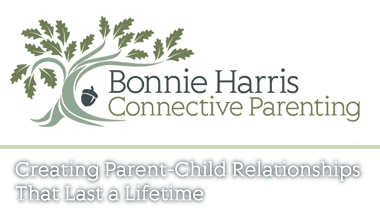 As I sit blissfully holding my infant grandson, I am struck by his fragility and vulnerability. He is dependent on us, his caregivers. And we in turn look to every possible behavioral sign to determine what needs caring for. Is he hungry, tired, does he have an internal pain, does he need a burp, a suck, a bounce, a diaper change? We rotate through the possibilities hoping to land on the right one, thrilled when we do, worried when we don’t.
As I sit blissfully holding my infant grandson, I am struck by his fragility and vulnerability. He is dependent on us, his caregivers. And we in turn look to every possible behavioral sign to determine what needs caring for. Is he hungry, tired, does he have an internal pain, does he need a burp, a suck, a bounce, a diaper change? We rotate through the possibilities hoping to land on the right one, thrilled when we do, worried when we don’t.
When he’s content, he coos and looks around curious about all he sees. When something is wrong, he makes a pained face and cries. We answer those cries. We will do so for a good long time to come.
Caregivers must pay attention to behavior that signals a problem the child is having—a need that must be met. As he grows, his cries turn to whines, hurts to frustration and anger. Sensations of discomfort, pain, and hunger get complicated with jealousy, confusion, shame, fear, embarrassment, anger. As he learns he is a separate entity, he understands that he can be left alone, yelled at, and made to feel bad. He learns he can be a problem to those he loves and needs the most.
 There is never a reason not to trust behavior as a cue to an inner need. But somewhere along the line, caregivers do stop trusting and instead attribute behavior to manipulative control tactics. Yes, children can learn to manipulate. They learn it from the source. What else are punishment, arbitrary consequences, and threats but manipulative control tactics to get children to do what they are told.
There is never a reason not to trust behavior as a cue to an inner need. But somewhere along the line, caregivers do stop trusting and instead attribute behavior to manipulative control tactics. Yes, children can learn to manipulate. They learn it from the source. What else are punishment, arbitrary consequences, and threats but manipulative control tactics to get children to do what they are told.
When do we shift from trusting behavior to distrusting, believing that punishment will eradicate the unacceptable? When children begin to assert their will and yell, no? When we get tired? Most of us were shamed and blamed for normal child behavior—behavior that displeased or struck fear in our caregivers. So, we were punished, as were our parents, and grandparents before that. It’s an age-old tactic that has not been questioned—although it leads to more problematic behavior.
In “These Precious Days,” author Ann Patchett writes of a friend’s extraordinary quality “to love the person in front of her as she is, to see all the glorious light inside them and reflect it back, everywhere.” It occurs to me that is exactly what my grandson is experiencing. His mother seems to look deeply into every cell of his being and reflects his wonder with amazement and love. But for so many children when this infancy stage ends, so too does mirroring that glorious light, and trust is lost. But this never has to end if behavior continues to be understood as signals.
 It’s time to understand that ANY and ALL unacceptable behavior—even manipulation—is a sign of emotional distress, not a sign that the child is attempting control. No child wants that. Children need to feel safe and cared for. They want to please and never disappoint. So, when their behavior is displeasing, it means it has become too hard to please, too hard to be successful meeting expectations.
It’s time to understand that ANY and ALL unacceptable behavior—even manipulation—is a sign of emotional distress, not a sign that the child is attempting control. No child wants that. Children need to feel safe and cared for. They want to please and never disappoint. So, when their behavior is displeasing, it means it has become too hard to please, too hard to be successful meeting expectations.
It means it’s time to look at your side of the equation. What are your expectations? What is your agenda? Have you lost sight of “all the glorious light inside?” It will disappear if you do not see it.
Most of us have learned by now that a baby’s cries are not manipulative. But babies are still in cribs when parents start fearing loss of their control to a power-hungry child. This is not the case, never has been, and never will never be—unless you do not know how stand in your power nor give your children the power they deserve. When you lose your self-control and personal integrity, your children feel helpless and behave badly.
As I gaze at my grandson’s little face so new to the world, a world he doesn’t even know he belongs to yet, I am continuously reminded of how vulnerable he is. How a trick of fate could have placed him in a situation where he would have to wait long periods of time until his cries stopped because he learned he couldn’t trust his environment to care for him. That basic trust is the foundation for every child’s sense of self and security. When basic trust is lost, it becomes impossible for the child to reach potential.
 Good or bad, our own childhood experiences rear up out of obscurity to inform what we do when a baby screams, a toddler runs off, a preschooler hits and throws, a school-ager refuses to brush his teeth, a tween yells to leave her alone, and a teen spends all his home time under a rock in his room with only his screen for company. Those experiences can create a barrier that prevents any well-meaning parent from seeing obnoxious behavior and trusting the child within, seeing “the glorious light.” Fear keeps the parent reacting to the behavior, missing the cues to a deeper need.
Good or bad, our own childhood experiences rear up out of obscurity to inform what we do when a baby screams, a toddler runs off, a preschooler hits and throws, a school-ager refuses to brush his teeth, a tween yells to leave her alone, and a teen spends all his home time under a rock in his room with only his screen for company. Those experiences can create a barrier that prevents any well-meaning parent from seeing obnoxious behavior and trusting the child within, seeing “the glorious light.” Fear keeps the parent reacting to the behavior, missing the cues to a deeper need.
We can continue to read an older child’s behavior the way that comes naturally with an infant. Although the behavior gets complex, the principle remains:
When the child is in distress, it shows up in behavior. The more distress, the worse the behavior.
To look for the light within, to accept the child, means to have compassion for the distress beneath the behavior with little to no attention on the behavior. But that’s not what we have been taught.
We must trust that the child’s behavior, as disruptive as it may be, is the only way they have to communicate their emotional needs. Ignoring them means the child will never feel confident, self-assured, capable and motivated to find their path—or to trust the critical people in their lives. Meeting the emotional needs form the foundation for the person you hope your child to become.
Related Articles:







